Museo Folclórico de Cheongsong (청송민속박물관)
.0M 2022-08-05
Juwangsan-ro 222, Cheongsong-eup, Cheongsong-gun, Gyeongsangbuk-do
Situado en el Parque Nacional del Monte Juwangsan (en Cheongsong, Gyeongsangbuk-do), el Museo Folclórico de Cheongsong abrió sus puertas en 1999 para promocionar la historia y cultura del municipio y sus alrededores. El museo ofrece exhibiciones interiores y exteriores y una sala de archivos. La sala de exhibicione interior dispone de materiales educativos relacionados con la agricultura y costumbres de Cheongsong. Exhibiciones como la sala de invitados tradicional, la sala de costuras, artículos de uso diario y de porcelana de Cheongsong, ofrecen la oportunidad de conocer cómo vivía la gente en el pasado. La sala de exhibiciones exterior reproduce una taberna tradicional, una noria), un molino de piedra que usaba la fuerza del caballo o el buey, un monumento de protección y prosperidad y piedras naturales utilizadas para el culto. También hay tótems tradicionales (llamados jangseung o sotdae), que esperan a los visitantes en la entrada del museo.
Hahn by Sono (한 바이 소노)
2.6Km 2025-06-09
494, Juwangsan-ro, Cheongsong-gun, Gyeongsangbuk-do
Parque Nacional del Monte Juwangsan (주왕산국립공원)
5.2Km 2023-02-20
Gongwon-gil 169-7, Juwangsan-myeon, Cheongsong-gun, Gyeongsangbuk-do.
El monte Juwangsan (721 m) fue designado como el Parque Nacional N° 12 en 1976 y es el parque nacional más pequeño del pais. La montaña no es tan escarpada, lo que la hace un lugar perfecto para caminatas y disfrutar del maravilloso panorama.
Juwangsan también recibe el nombre de monte Sokbyeongsan, Jubangsan y Dedunsan. Hay una leyenda que dice que el rey de Silla (57 a.C-935 d.C) vivió en esta montaña después de entregar su trono a Goryeo. De aquí proviene su nombre “Juwang” ("donde reside el rey", en coreano). Existe otra leyenda en la cual se dice que el general Mailseong de Goryeo asesinó con flechas y armas de hierro, al rey Wuju quien estaba viviendo aquí.
En el monte Juwangsan hay templos como los templos Daejeonsa, Gwangamsa, Yeonhwasa y ermitas como el Juwangam y Baekryeonam. En el templo Daejeonsa se preservan tesoros nacionales como el retrato del gran monje budista Sa-Myeong, y la tabla de madera tallada por el mismo general Lee Yeo-Song para el monje Sa-Myeong. También podrá encontrar muchas rocas con interesantes formaciones como el Giam, Seokbyeokam, Geupsudae, Jeongsam y Adeulbawi; asimismo, cuevas como Juwanggul donde Juwang se escondía, pero que finalmente fue atrapado; el Mujanggul, donde se almacenaban las armas; y Yeonhwagul donde se hacían los entrenamientos.
Hay muchas cascadas que muestran la belleza del monte Juwangsan. Las principales son las cascadas 1era., 2da., 3era., y las cascadas Dalgi. También se pueden encontrar hermosos valles como el valle Juwang-externo, Juwang-interno, Wolwae y Naewon. En la ladera de la montaña hay un Jahaseong de 6 metros de alto que se extiende unos 15 km., y en el arroyo Goenae se encuentra la fuente de agua mineral Dalgimul.
Festival de la Manzana de Cheongsong (청송사과축제)
5.4Km 2025-09-09
Wolmak-ri 362, Cheongsong-eup, Cheongsong-gun, Gyeongsangbuk-do.
054-870-6237
El Festival de la Manzana de Cheongsong se celebra en octubre o noviembre de cada año para promocionar la excelente calidad de las manzanas cultivadas en el área. Cheongsong, que significa "zona limpia", tiene las condiciones perfectas para que las manzanas alcancen un sabor superior, ya que está rodeada de montañas cuya latitud promedio elevada favorece a estos árboles. Además, no hay fábricas industriales en los alrededores. El festival ofrece varios programas únicos para el entretenimiento de los visitantes y en el mercado se venden manzanas a buen precio.
Templo Daejeonsa (대전사)
5.6Km 2023-02-22
Gongwon-gil 226, Juwangsan-myeon, Cheongsong-gun, Gyeongsangbuk-do.
Se dice que este templo fue construido por el Gran Monje Uisang en el 12º año del reinado del rey Munmu (año 672). Fue reconstruido en el 13º año del reinado del rey Hyeonjong (año 1672) después de que un fuego lo destruyera en la Guerra de Imjin contra la invasión japonesa. Durante el trabajo de renovación de la sala Bogwangjeon en 1976, se encontró un texto que se había puesto entre las vigas. La sala Bogwangjeon es un pequeño edificio y su techo tiene la forma del símbolo #. En la sala hay una estatua budista Birojanabul consagrada.
Residencia Tradicional Songso Gotaek en Cheongsong (청송 송소고택)
7.2Km 2021-11-25
Songsogotaek-gil 15-2, Pacheon-myeon, Cheongsong-gun, Gyeongsangbuk-do.
+82-54-874-6556
La Residencia Tradicional Songso Gotaek se encuentra en el municipio de Cheongsong-gun, en la provincia de Gyeongsangbuk-do y data de finales de la dinastía Joseon.
Embalse Jusanji (주산지 (청송 국가지질공원))
9.9Km 2024-03-25
Jusanji-ri, Juwangsan-myeon, Cheongsong-gun, Gyeongsangbuk-do.
El embalse Jusanji es un pequeño espejo de agua situado en el Parque Nacional del Monte Juwangsan. Es un embalse artificial que fue creado en agosto de 1720 y terminado en octubre del año siguiente. Ha sido utilizado como fuente de agua para uso agrícola, así como para agua potable. Incluso aunque es de tamaño pequeño, de unos 100 metros de largo, 50 metros de ancho y 7 u 8 metros de profundidad, nunca se ha secado por ninguna sequía. Los espesos bosques circundantes del monte Juwangsan son un lugar bastante impresionante para aquellos que amen la naturaleza. Hay 30 sauces que tienen 150 años y están arraigados en el embalse, lo cual hace un equilibrio fantástico con el entorno, creando un paisaje pintoresco que no se encuentra en ningún otro lugar. La belleza de este bosque junto con la naturaleza circundante culmina cuando las sombras de los árboles se alargan sobre las aguas mansas. Las palabras no pueden expresar la vista magnífica de los alrededores, con el agua, los árboles y la niebla en conjunto.
Las mejores estaciones para visitar Jusanji son la primavera y el otoño. La gente dice que la mejor época para ir es cuando los brotes primaverales comienzan a aparecer en abril y mayo, o cuando el follaje otoñal está en todo su esplendor. En el verano, se extrae mucha agua para la agricultura, así que el área parece vacía, y en el invierno, el embalse está helado y no es posible ver los reflejos de los árboles sobre el agua.Jusanji está situado en la parte interior del monte Juwangsan, la cual, a diferencia de la parte exterior, en donde las rutas de senderismo están más desarrolladas, había sido considerada como recóndita debido a su inaccesibilidad y a sus montañas escarpadas. Comenzó a volverse famosa para el público en general hace unos 20 años cuando los fotógrafos llegaron buscando paisajes hermosos. En el último tiempo, el número de visitantes ha aumentado abruptamente, después de que el director de cine Kim Ki-duk mostrara las pintorescas cuatro estaciones del lago en la película Spring, Summer, Fall, Winter and Spring (Primavera, verano, otoño, invierno y primavera). Incluso aunque el plató cinematográfico fue desmantelado por razones medioambientales y de administración, para prevenir la contaminación del agua, numerosos visitantes continúan llegando al lugar.
Valle Eoreumgol de Cheongsong (청송 얼음골)
14.6Km 2023-01-27
Naeryong-ri, Juwangsan-myeon, Cheongsong-gun, Gyeongsangbuk-do
El municipio de Cheongsong-gun, en la provincia Gyeongsangbuk-do, es muy famoso por la calidad de sus aguas. En el valle Eoreumgol, el agua se congela incluso en verano, debido a los vientos fríos propios del valle. Muchas personas visitan este lugar donde el verano para probar las aguas frescas y tomar fotos pintorescas en las formaciones rocosas de los alrededores y de un templo en las cercanías. Hay un acantilado llamado Wonja, justo debajo del valle helado, que ofrece un refugio del calor del verano junto con vistas de una cascada artificial de 62 m de altura. En invierno, todo el lugar se congela y muchas personas escalan las paredes de hielo o participan de competiciones de esta disciplina. Aun cuando usted no sea afecto a los deportes invernales, aproveche las majestuosas vistas de las paredes de hielo de aquí en invierno, que atraen a muchos fotógrafos profesionales.
Academia Neoconfuciana Mukgye Seowon y Residencia Mukgye del Clan Kim de Andong (묵계서원 및 안동김씨 묵계종택)
15.3Km 2024-05-17
Chunghyo-ro 1736-5, Giran-myeon, Andong-si, Gyeongsangbuk-do
Pabellón Manhyujeong (만휴정)
15.6Km 2023-02-13
Mukgyehari-gil 42, Giran-myeon, Andong-si, Gyeongsangbuk-do
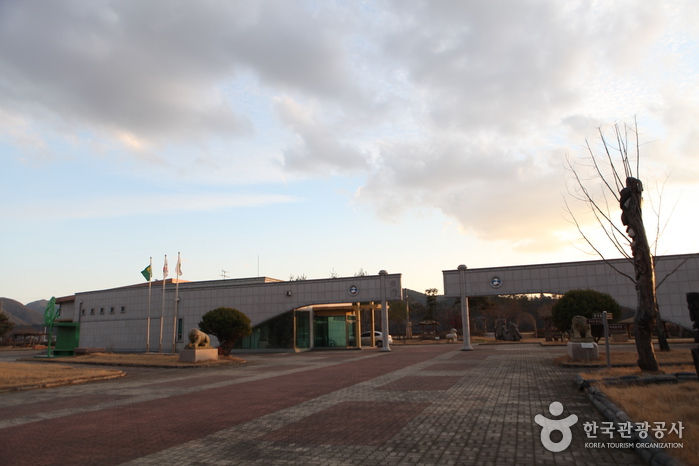
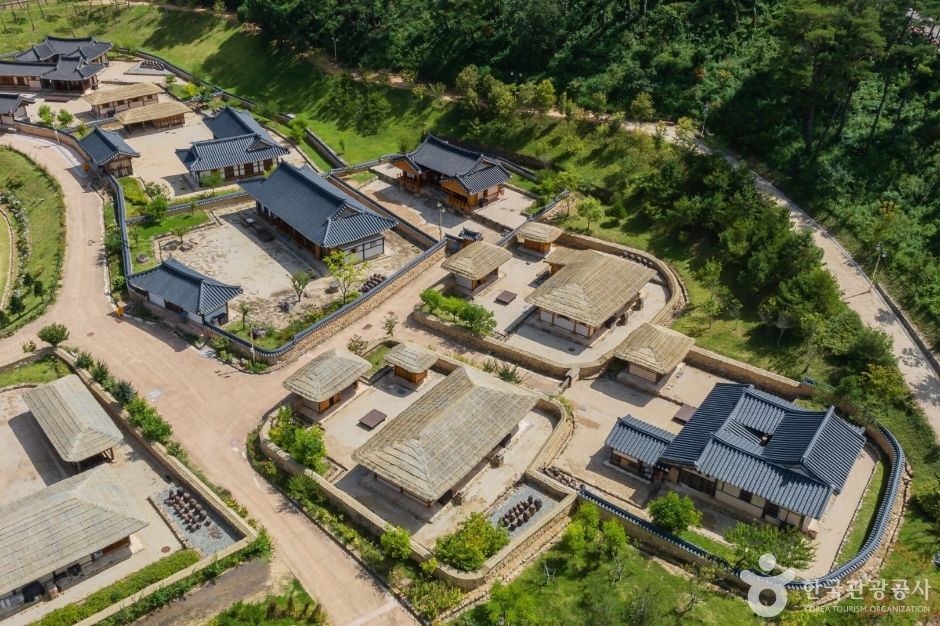

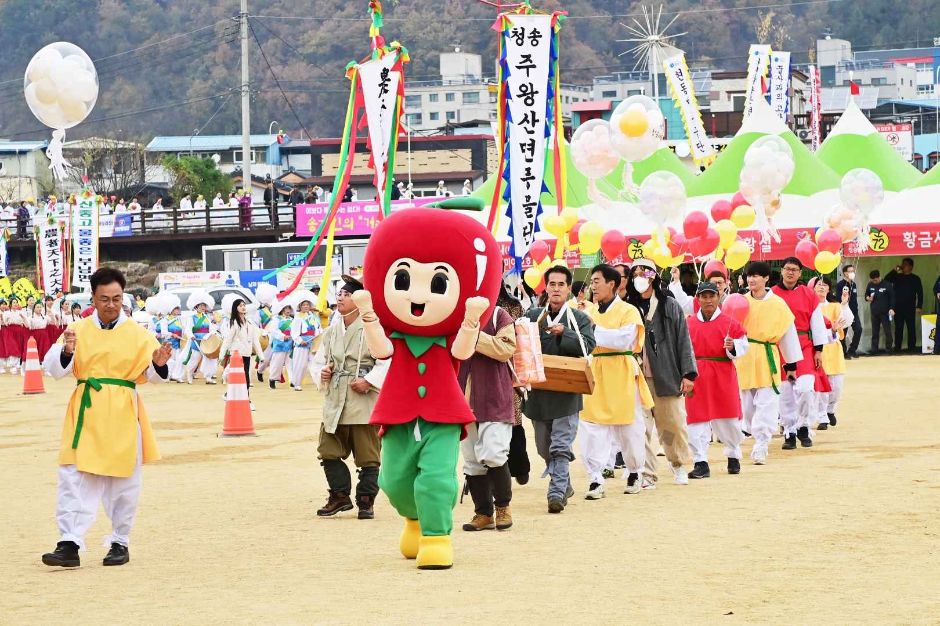
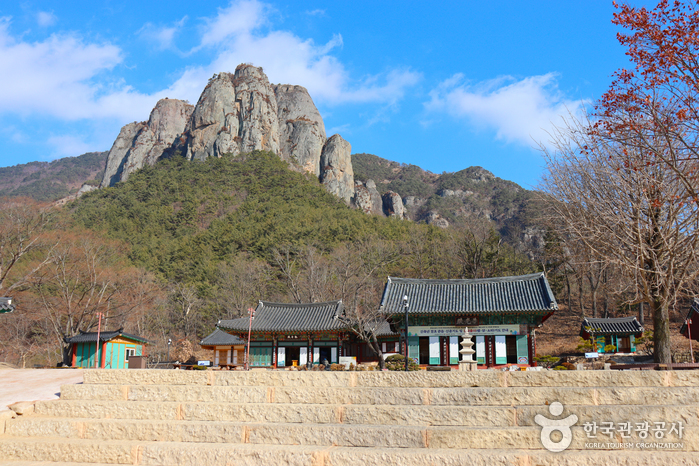
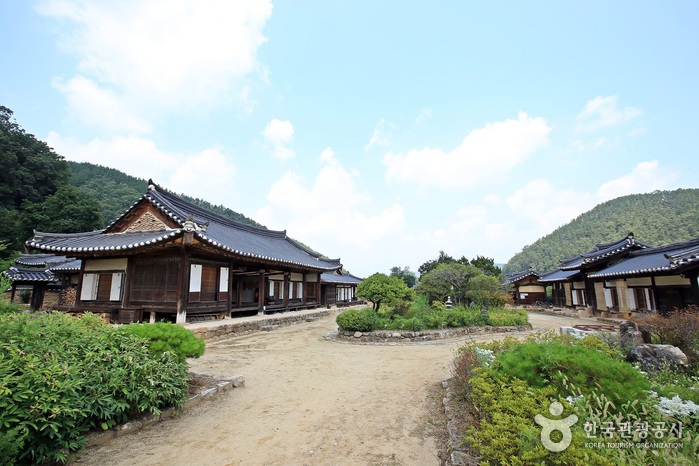
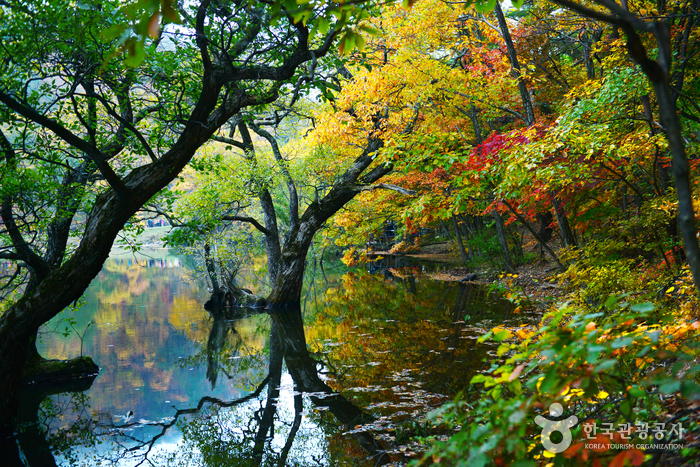
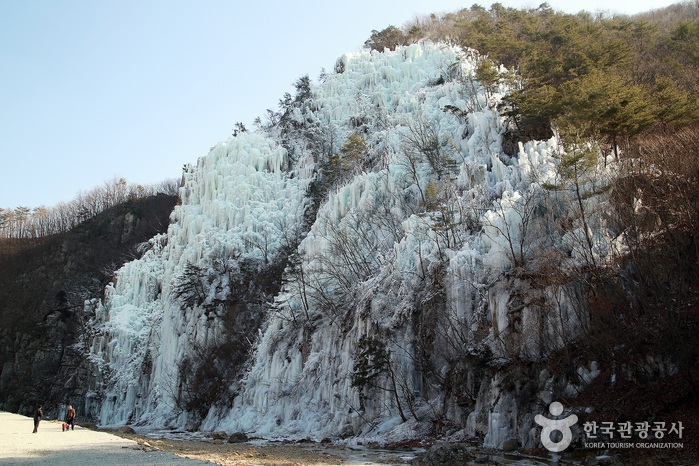
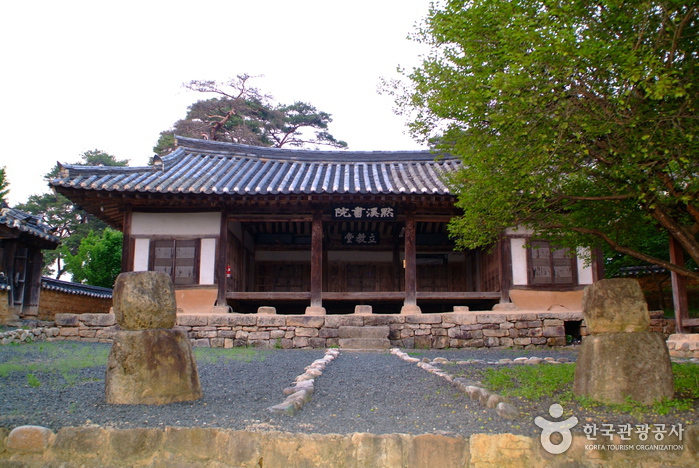
 Español
Español
 한국어
한국어 English
English 日本語
日本語 中文(简体)
中文(简体) Deutsch
Deutsch Français
Français Русский
Русский